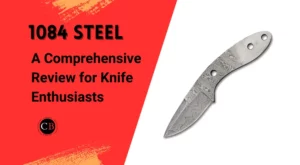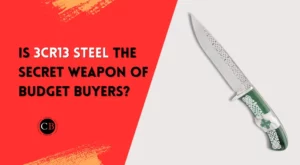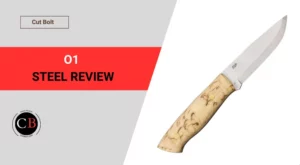For many knife enthusiasts, the debate between ceramic and steel knives is one that is never-ending. While steel knives have held a special place in their hearts for years, the recent growth of ceramic knives has been hard to ignore.
With their ease of use, versatility, and longevity, ceramic knives have definitely earned a spot in the kitchen of every cook.
But, how do they stack up against the classic and beloved steel knives? In this post, we’ll explore the differences between ceramic and steel knives, and determine which is best for your collection. So buckle up and get ready to dive into the world of ceramic knife vs steel knife.
Ceramic vs Steel knife in a snapshot
First, let us have a quick snapshot of ceramic knife vs steel knife by going through the advantages and disadvantages they have. Later we will discuss them in detail.
Ceramic Knives:
Pros
- Hygienic: Ceramic knives are more hygienic as they don’t let in microorganisms, dirt or flavors of other foods because they are less porous material than steel.
- Light: Ceramic knives are lighter than steel and more maneuverable. Easier to use.
- Easy to clean as dirt doesn’t stick to it.
- No rust as it is not metal.
- Stay sharp for longer periods of time due to the hardness of the material.
Cons
- Expensive: ceramic knives are more expensive than stainless steel knives.
- Fragile: as it is harder, it tends to be brittle. Less resistant to drops.
- Hard to sharpen: Ceramic knives need a special sharpener to sharpen and are difficult to sharpen.
- Cutting: Not for boning or carving, but rather well for cutting boneless meats or vegetables.
Steel Knives:
Pros
- Stronger: Stainless steel is stronger than ceramic knives, whatever the shape or thickness is.
- Flexible: Flexibility is an added advantage for steel knives. It can adapt to a certain degree to the shape of the food, i.e. boning knife.
- Easy to sharpen: Steel knives are easy to sharpen as they are stronger than ceramic knives but their hardness is low.
- Price: Steel knives are cheaper than ceramic knives as the number of brands and quality they are produced.
Cons
- Edge retaining: Stainless steel knives lose their edge quickly compared to ceramic knives as resistance to scratches is less due to low hardness.
- Sharpness: You will need to sharpen steel blades frequently.
- Rusty: Steel can get oxidized with humidity or from the acidity of foods.
- Heavier: Weight is higher compared to ceramic knives.
- The porous structure of the sheet harbors bacteria and odors.
- They can leave a metallic taste in some dishes.

What is a ceramic knife?
They are not made of metal, nor of plastic, so what? Ceramic knives are made of a material called zirconium dioxide, a highly abrasion-resistant type of ceramic that gives them their unique properties of hardness (they don’t scratch) and lightness.
Originally, the ceramic knife is a Japanese knife developed by the Kyocera brand since the 80s. This powder (water, raw powder and ceramic milling balls) mixture is compressed by a machine using a pressure of 10,000 tonnes/m². Once compressed, the knife is heated at a temperature of 1500°C. This chemical process makes it possible to obtain a solid ceramic reaching 8.5 on the Mohs scale (material hardness scale). For information, steel has a hardness between 5 and 6.
We are not discussing steel knives here, you can learn more about steel knives here.
Applications of ceramic knives
They are ideal for filleting meats and peeling fruits and vegetables due to their maneuverability, sharpness and low weight. Its cuts are precise and require little effort. They allow cutting in detail without effort and must be accompanied by a good wooden or plastic board, do not use stone boards or very hard material to avoid blows that damage them. Ideal for peeling fruits and vegetables if they are small knives, chopping vegetables and filleting meat with ease.
Thanks to its unique composition, this type of knife is able to resist rust and the acidity of certain foods.
Learn if ceramic knives are safe for health here.
Ceramic vs Steel Knife: Differences Explained
Knife weight
Metal knives: Steel knives are heavier than ceramic knives as the density of steel is more than ceramic. The same size of the ceramic knife is lighter in weight. It (weight) has both advantages and disadvantages.
For example, people with tendinitis or joint problems will appreciate being able to use a lighter knife with the same benefits, while for others the weight of the knife can be a positive factor since its inertia would help to generate faster and more precise cuts in meat and fish.
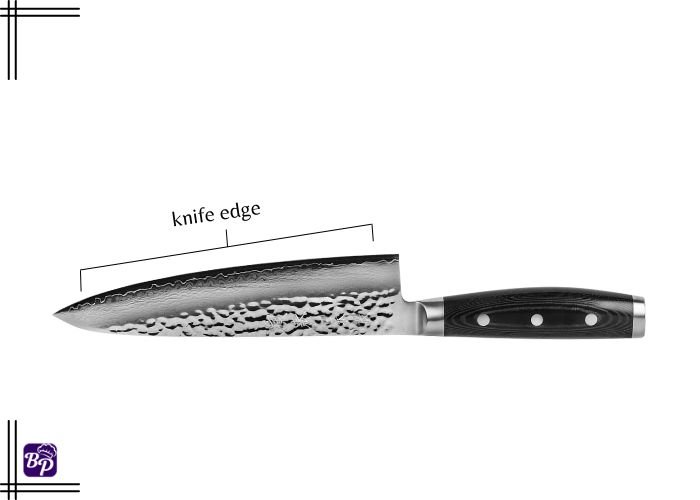
Edge retention
Ceramic is one of the hardest materials in the world, and it is an advantage for the knife. It can retain an edge for a longer period of time. You can use the knife in the kitchen without frequent sharpening. But like all other knives, ceramic knives also require to be sharpened after a certain time period.
Steel knives on the other hand are stronger than a ceramic knives. Remember being hard and being strong are two different things. A steel knife will need frequent sharpening because the metal can get rust from food particles or moisture. Even steel is more prone to get affected by wear and tear during daily use.
Here ceramic knives are a clear winner in case of edge retention. However, as metal knives get frequent sharpening they have almost always a perfect edge.
Learn how to sharpen a ceramic knife at home.
Resistance vs Fragility
I already mentioned ceramic knives are much harder than steel knives but they are not stronger than steel.
As ceramic knives are harder, they are more brittle and can break if you accidentally drop them on the floor or use them to cut bones.
Steel knives are strong and flexible. Almost 99.9% of the time a steel knife will not break if you drop it. If you use a steel knife to cut bones or foods that are hard (like frozen meat), the knife is not going to break away.
Here steel knives are the clear winners.
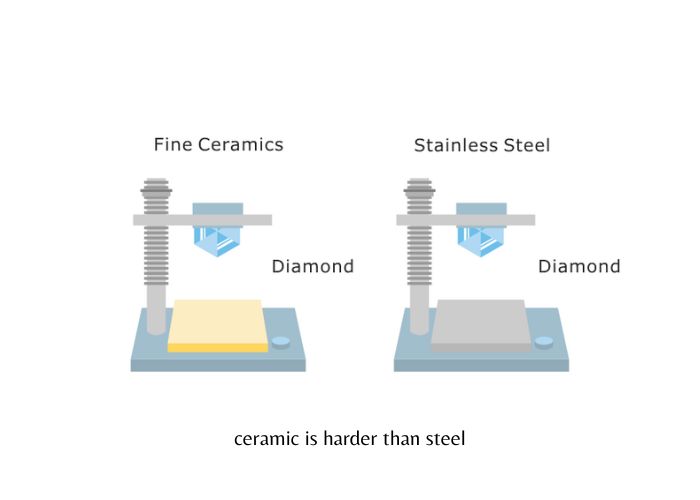
Food flavors
Unlike metal ones, ceramic knives do not rust or leave a metallic taste in food.
In simple words – metal reacts to chemical ingredients in food. Due to this reaction, sometimes it can alter the flavor of foods. Ceramic does not react to food particles or change the aroma.
Though the reaction is very less as it takes a very short time to chop foods, still it is a factor that can’t be ignored. Especially when we talk about contamination and ceramic knives being the winner here.
Rust
This may surprise many, but if you think about it, it is quite logical: when we are not dealing with metal, of course, there is no rust. Rust is a problem with steel knives, which you have to keep dry at all times, otherwise, it can ruin an expensive chef’s knife. Therefore, for example, leaving the knife in the sink with water on it is a no-go – but you don’t have to worry about that with ceramic knives.
So the winner is the ceramic knife.
Cleaning
Ceramics are easier to clean by hand, as they have very few pores – the fewer pores there are, the less dirt can get stuck. They have a smoother surface, and just rinsing a ceramic kitchen knife under the hot tap can make it significantly cleaner than if you scrubbed a steel knife.
The winner is ceramic knife!
Price: ceramic knife vs steel knife
This is the tricky part. Some steel knives are super pricey. But you will find more of them within an affordable range. For ceramic knives, the average price of a good quality ceramic knife is more than a steel knife.
As there are a vast number of manufacturers and different qualities of metals used for making knives, metal knives tend to be less pricey.
For the price, ceramic knives may seem expensive, but if we’re being honest, a high-quality metal knife also costs a lot of money. In addition, it must be remembered that ceramic knives require less sharpening, which makes them more economical in the long term.
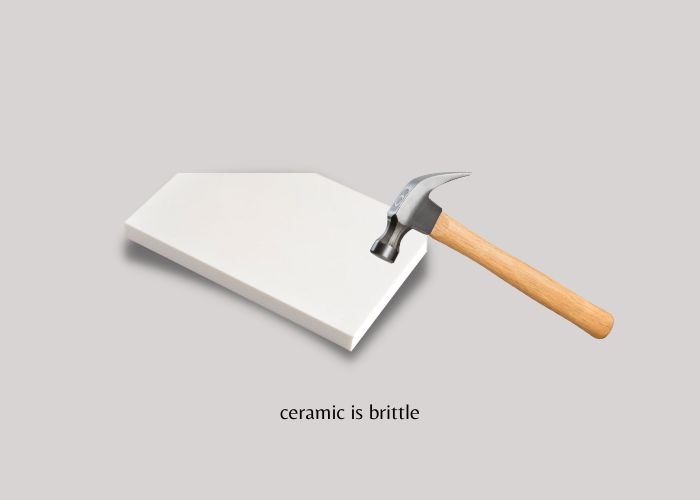
Are ceramic knives substitute for metal knives?
No, ceramic knives will never fully replace traditional kitchen knives. Especially since they cannot be used for all the functions that are required in a kitchen. These types of knives are specifically designed to cut soft foods (meat, fruit, vegetables etc.). However, what they do they do very well and as a complement to your knives, they work very well.
How to use a ceramic knife?
It is important to know how to use a ceramic knife to benefit from better efficiency while avoiding premature damage. Here are some precautions to take.
Solid from the back to the front, but quite fragile in twisting, you should know above all that such a utensil should not be used to bone, separate or cut hard or frozen foods. This has been designed to efficiently and accurately cut and mince fruit, vegetables, boneless meat, fish fillet, ham or sausage.
It is also advisable to use a ceramic knife on a wooden or plastic cutting board and not on stone, marble or glass, otherwise, the edge of the blade will be damaged.
Finally, avoid exposing the ceramic blade to flames even if it is resistant to thermal shock.
How to clean and sharpen your knife?
Maintaining a ceramic-made knife is not complicated. You can simply wash it with a sponge, water and dish soap, since the ceramic does not absorb any food element.
Avoid rubbing the blade with an abrasive object if dirt remains stuck on your knife, as this could damage it. Let it soak in hot, soapy water for a few minutes before sponging and rinsing it.
As for sharpening and honing, we advise you to use a sharpener suitable for ceramic blades. You can also use a diamond sharpener.
Be aware, that good quality knives with a high rate of zirconia can do without sharpening for 5 years of use. Simply store them in a dedicated storage base to avoid clashes with other utensils in the drawers.
Ceramic knife vs steel knife in summary:
| Ceramic Knife | Steel Knife |
|---|---|
| Rigid and fragile | Flexible and break resistant |
| Much harder compared to steel | Relatively soft |
| A special sharpening tool required | Easy to sharpen |
| Gets dull after a long time | Can easily get dull |
| Lightweight | Heavier than ceramic |
| Ceramic is tasteless | Steel has its own taste |
| Suitable for allergy sufferers | May contain allergens, depending on the alloy |
| The average price is higher than steel knives | The average price is lower and affordable |
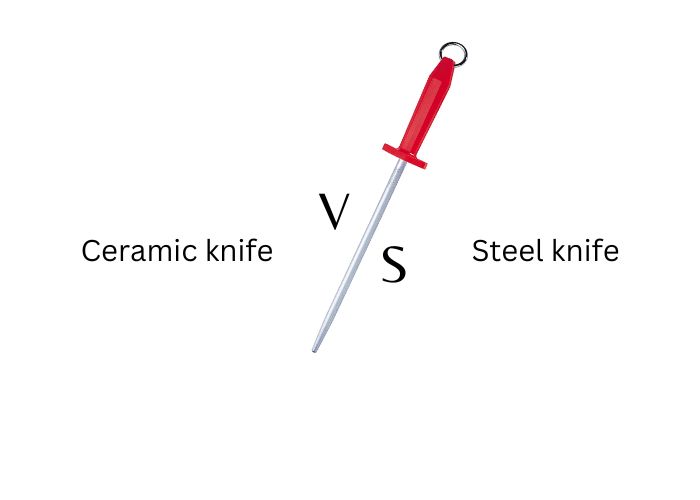
Ceramic knives vs steel: which one to choose?
When the time comes to choose one, we often hesitate between a steel or ceramic knife. Each of these two materials has its advantages and disadvantages, which makes the choice difficult.
Your choice must be justified according to your objectives and expectations. If you are looking for a knife that can be used over the long term, it is preferable and even strongly recommended, to choose a stainless steel knife. However, to keep the blade sharp, we advise you to sharpen it regularly and to use a sharpening gun.
On the other hand, if you are looking for precision and sharpness as a basic criterion for the choice of a knife, you need a ceramic one.
Indeed, a ceramic blade has very long durability of cutting edge compared to a steel blade. You will only have to sharpen your blade once or twice a year. However, a ceramic blade is much more fragile than a steel blade. An interesting paradox is that ceramic is less flexible than steel, despite its fragile appearance.
Robustness and precision, steel vs ceramic. We understand the difficulty of the choice you have to make. It is undoubtedly preferable to have both at home, as these two materials complement each other nicely.
However, this is not always possible. This is the main reason we have created this guide. Define your goals, and determine if you want a knife that will serve you for many years or if you simply want a knife that will work, no matter if you have to change it after a few months.

